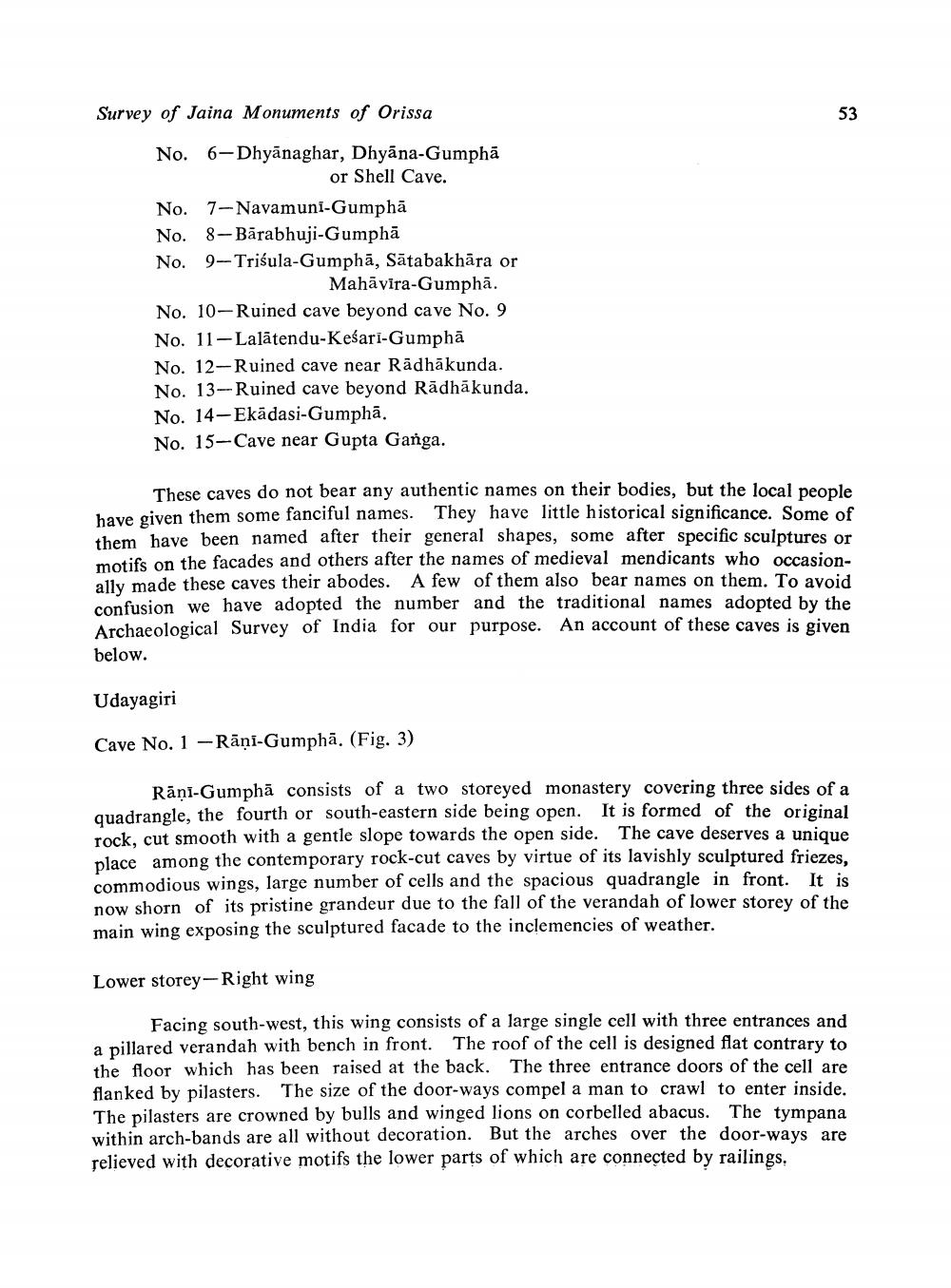________________
Survey of Jaina Monuments of Orissa
No. 6-Dhyānaghar, Dhyana-Gumphā
or Shell Cave. No. 7- Navamuni-Gumphā No. 8-Bārabhuji-Gumphā No. 9-Triśula-Gumphā, Sātabakhāra or
Mahāvira-Gumphā. No. 10- Ruined cave beyond cave No. 9 No. 11-Lalātendu-Keśari-Gumphā No. 12- Ruined cave near Radhakunda. No. 13- Ruined cave beyond Rādhakunda. No. 14-Ekādasi-Gumphā. No. 15-Cave near Gupta Ganga.
These caves do not bear any authentic names on their bodies, but the local people have given them some fanciful names. They have little historical significance. Some of them have been named after their general shapes, some after specific sculptures or motifs on the facades and others after the names of medieval mendicants who occasionally made these caves their abodes. A few of them also bear names on them. To avoid confusion we have adopted the number and the traditional names adopted by the Archaeological Survey of India for our purpose. An account of these caves is given below.
Udayagiri
Cave No. 1 --Rāņi-Gumphā. (Fig. 3)
Rāņi-Gumphā consists of a two storeyed monastery covering three sides of a quadrangle, the fourth or south-eastern side being open. It is formed of the original rock, cut smooth with a gentle slope towards the open side. The cave deserves a unique place among the contemporary rock-cut caves by virtue of its lavishly sculptured friezes, commodious wings, large number of cells and the spacious quadrangle in front. It is now shorn of its pristine grandeur due to the fall of the verandah of lower storey of the main wing exposing the sculptured facade to the inclemencies of weather.
Lower storey-Right wing
Facing south-west, this wing consists of a large single cell with three entrances and a pillared verandah with bench in front. The roof of the cell is designed flat contrary to the floor which has been raised at the back. The three entrance doors of the cell are flanked by pilasters. The size of the door-ways compel a man to crawl to enter inside. The pilasters are crowned by bulls and winged lions on corbelled abacus. The tympana within arch-bands are all without decoration. But the arches over the door-ways are relieved with decorative motifs the lower parts of which are connected by railings.




